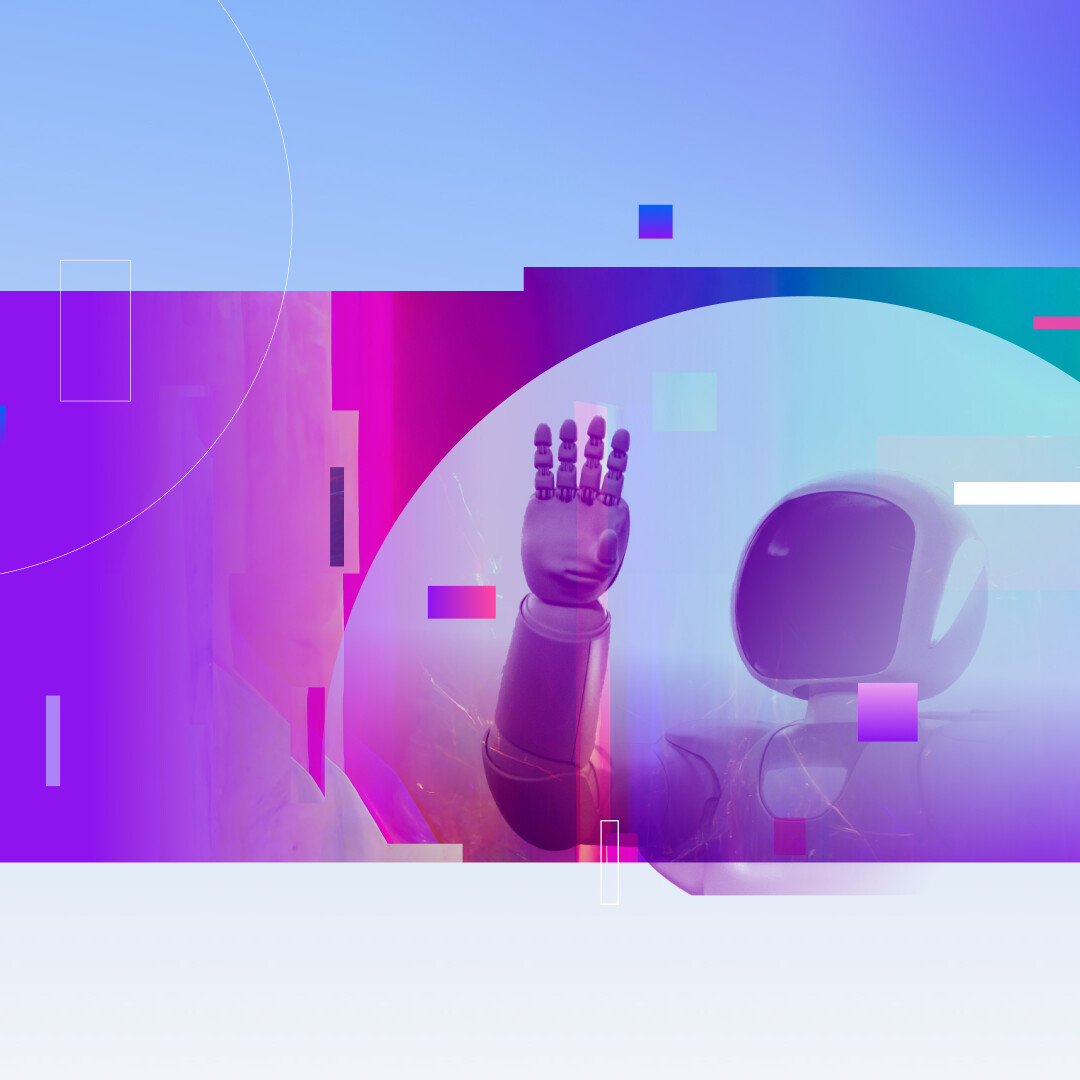The rapid development and adoption of generative AI is creating unique opportunities for human-machine collaboration, but it’s critical that we keep a steady focus on its purpose: to empower humans.
The November 2022 release of ChatGPT set the human-to-machine relationship to superdrive. In the first five days of its availability, ChatGPT from OpenAI had over a million users. By January 2023 it reached over 100 million users, making it the fastest growing consumer application in history. At the time we’re publishing this article, June 2023, there are over 10 million daily queries on the platform. Generative AI is now a central focus of tech industry giants Microsoft, Meta, Google, and IBM, to name a few, as well as hundreds of startups. It’s clear that the real impact of this burgeoning tech has yet to be imagined and realized.
Despite its transformative momentum, there are many controversies about its potential for AI autonomy and its ability to thwart many of the guardrails that keep our digital lives intact, secure, and predictable. So, how do we overcome these challenges and navigate the rapid adoption of generative AI?
As we shared in our 2023 Futureview Trend Report, we believe that the future of AI is cooperative; that its highest value is achieving a realistic balance of assistance and autonomy in both the design process and the resulting products. With the principles of cooperative intelligence at its core, generative AI can provide balanced assistance, affective connection, and adaptive guidance for users, empowering human autonomy while establishing valuable digital partnerships. But in its current state, there are key challenges that must be navigated to fully unlock its potential power. In this article, we’ll outline three key areas of opportunity that can help improve generative AI product experiences and pave the way for a more cooperative AI-driven future.
Opportunity 1
Build Trust
with Transparency & Relatability
To foster trust in AI among users, it’s vital to enhance the transparency and explainability of intelligent systems. Demystifying the so-called ‘black box’ algorithms that power these systems is a crucial step toward that goal. Additionally, addressing common ethical concerns with AI systems, such as sustainability, bias, and privacy, through increased transparency will further strengthen users’ confidence in these technologies.
By developing AI personas that are honest and affable, we can humanize these technologies and make them more relatable and trustworthy. Natural language, supportive tone, and sensory expressions can enhance connections. The most relatable products create interactions that feel more human rather than literally personify AI as human. Additionally, incorporating opportunities for user approvals and adapting AI responses based on real-world interactions and preferences will further enhance trust, ensuring that the AI systems meet users’ expectations and needs.
Meet Tomo, a Personal Assistant with Personality
At Punchcut Labs, we created Tomo to demonstrate a more human approach to generative AI. We envisioned a flexible service with a dynamic personality that adapts to individual needs and preferences. While not depicted as literally human, we designed Tomo to be more relatable to humans through its playful character, natural language, familiar expressions, and emotional intelligence.
Opportunity 2
Guide Users
with Intentional Interfaces
While conversational interfaces have made significant strides in making AI more accessible, they fall short in helping users fully utilize the vast potential of generative AI tools. Open-ended input fields challenge users as they ponder what to input to generate a successful outcome. Similar to the shift from open-ended command line interfaces to more app-based GUI, today’s generative AI experiences need richer interfaces that visualize and surface advanced capabilities without overwhelming users. This means crafting intuitive interactions, clearly communicating the capabilities of generative AI tools, and guiding users on how to best leverage these tools for their specific needs. Thoughtful UI design will allow users to tap into the true potential of AI systems, creating more valuable and personalized experiences.
Remix Your Room, There's an AI (and UI) for That
People often struggle when starting from a blank canvas. Tomo goes well beyond an open-ended form field to help get things going with smart starting points and an interface that responds to specific tasks. In this scenario, Tomo helps redesign a room with just an image of the space, rapidly generating multiple style variations. But Tomo creates more than just an interior design — it generates an interface tailored to the task at hand with dynamic controls to customize everything to your personal taste and lifestyle.
Opportunity 3
Integrate Services
to Scale Assistance
Currently, many generative AI tools operate in isolation, limiting their usefulness and impact. Accelerating the integration of AI services with other AI and non-AI services, as well as reliable sources of real-world data, is essential to maximize the benefits of generative AI. Besides boosting system reliability with data-backed reasoning, powerful integrations will also empower AI to automate and carry out complex tasks. By integrating and consolidating these applications into new and existing workflows, we can forge better connections between AI tools and amplify their benefits to users, ultimately enabling users to harness the power of connected AI services in a more streamlined and efficient manner.
Vacation Planning, Teamwork Makes the Android Dreams Work
When planning a group vacation, everyone has something to say, and with Tomo, vacation planning is as simple as a casual conversation among friends. As the group discusses, Tomo listens, processes everything in real time, and comes up with ideas that everyone will love. Tomo not only proactively suggests and executes solutions, but also integrates with other services to assist with tasks like making dinner reservations, booking hotels, and changing appointments.
Shaping the Future
Generative AI is a transformative technology that holds the promise of redefining how we live, work, and engage with digital systems. To unlock its full potential, it’s essential to tackle the challenges associated with building a more trusted human-to-machine relationship, intuitive and effective user guidance, and seamless integration of other apps and services. As we work with leaders in industry and tech to create more adaptive interfaces for generative AI, the goal is to cultivate a rewarding, cooperative relationship between humans and AI that leads to more meaningful digital partnerships that empower and enrich the human experience.
AI will radically transform our world, but if we don’t reshape it, it will reshape us. We must work consciously to envision and realize AI experiences that center on human needs and behaviors, and exist to serve and empower people, not the other way around. In pursuing this approach, we are paving the way for a future in which generative AI enriches our experiences, fuels innovation, and moves us closer to achieving more effective and meaningful human-AI symbiosis.
Case Study
A Human Approach to AI
To learn more about our vision for the future of generative AI, check out our case study. Tomo is the generative AI assistant to supercharge your everyday tasks. Tomo is proactive, personal, creative, and always ready to help.
A Punchcut Perspective
Akshat Srivastava
Contributors: Isabella Berger, Rachel Farn, Emily Finley, Amal Jafrani, Jay Jansen, Nancy Ku, Adam Marcus, Meghan Porter, Ilia Savin, Ashley Schoenknecht, Jesus Valenzuela, Nick Munro, Nate Cox, Ken Olewiler, Generative AI Lab Group
© Punchcut LLC, All rights reserved.




